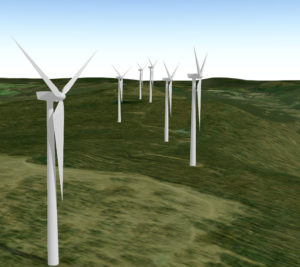In 1973, the Organization of the Petroleum Exporting Countries (OPEC) embargoed the delivery of their oil to certain countries, leading to global geopolitical turmoil and energy supply challenges.
Affected countries reacted in different ways: Denmark embarked on a diversification programme – we previously explored that in our The Pelican Energy Transition post – whilst the increasing oil price convinced the UK government that developing further fields in the North Sea, had become economically viable.
 Today, the war in Ukraine and its associated oil and gas supply issues from Russia have focused minds again on national energy security which has seen an uptick in exploration activity.
Today, the war in Ukraine and its associated oil and gas supply issues from Russia have focused minds again on national energy security which has seen an uptick in exploration activity.
Recently, the UK government has offered up nearly 900 blocks for exploration as part of the 33rd Offshore Oil and Gas Licensing Round and the USA, having recently suspended such activity, is re-launching the Bureau of Ocean Energy Management (BOEM) Gulf of Mexico Lease Sales in 2023.
The Ecuadorian Ministry of Energy and Non-Renewable Natural Resources is expected to announce further opportunities to develop the Gulf of Guayaquil natural gas field and the Australian government has made ten offshore sites available.
But the world has changed in the past fifty years. All of these countries now have climate-change targets that their governments have committed to meeting.
So how does ongoing oil and gas activity sit alongside the ambition to further the energy transition’s primary ambition of removing carbon from the ecosystem? As with many things geoenergy, the answers usually lie under the earth.
 Unsurprisingly, the Australian announcement was met with concerns about increased carbon release, but what may have been missed was that Minister for Resources and Northern Australia, Madeleine King simultaneously confirmed that she was approving two new offshore greenhouse gas storage sites.
Unsurprisingly, the Australian announcement was met with concerns about increased carbon release, but what may have been missed was that Minister for Resources and Northern Australia, Madeleine King simultaneously confirmed that she was approving two new offshore greenhouse gas storage sites.
The permits for these new carbon capture and storage areas were awarded to a joint-venture made up of oil and gas companies INPEX, Woodside and Total.
Geoscientists working for these companies combine their knowledge and experience of sub-surface geology with a wide range of exploration data, to understand the structure and fill of basins. That insight allows them to locate sites for storing carbon, as well as finding potential hydrocarbons.
And of course, every depleted oil and gas field has the potential to be a new carbon storage site.
 Alongside the UK government’s desire to further develop the country’s offshore petroleum resources, the North Sea Transition Authority (NSTA) also launched the UK’s first-ever carbon storage licensing round with 13 areas being made available.
Alongside the UK government’s desire to further develop the country’s offshore petroleum resources, the North Sea Transition Authority (NSTA) also launched the UK’s first-ever carbon storage licensing round with 13 areas being made available.
Further downstream, offshore infrastructure such as platforms and the network of pipes connecting them to the mainland, may well yet be adapted to assist other parts of the energy ecosystem, as evidenced by a recent UK Government consultation.
On announcing his investment of £18 billion into the UK’s energy system via the North Sea, CEO of BP, Bernard Looney said: “We’re backing Britain. It’s been our home for over 110 years, and we’ve been investing in North Sea oil and gas for more than 50 years. We’re fully committed to the UK’s energy transition – providing reliable home-grown energy and, at the same time, focusing on the drive to net zero.”
Again, a message that the two sides of this industry can run in parallel.
Demonstrating its multi-sector ambitions, BP is planning to build two large-scale hydrogen production facilities in England, will play a leading role in one of the UK’s first CCS projects and be a partner that develops multi-decade leases for offshore wind farms.
 As compelling as the scientific and ecological reasons are for developing new technologies, it is often the availability of investment capital that makes the final decision on their future.
As compelling as the scientific and ecological reasons are for developing new technologies, it is often the availability of investment capital that makes the final decision on their future.
That’s what makes the BOEM announcement so interesting: President Joe Biden signed the Inflation Reduction Act (IRA) into law in August and while it touches nearly every part of American people’s lives, it will have a significant impact on the oil and gas industry.
For the next decade, onshore oil and gas royalties in the US will be raised and the non-competitive sale of leases will be stopped. To balance these costs for the industry, the bill mandates that at least two million acres of Federal land must be offered for development.
Commentators have estimated that this bill will raise in the region of US$700 billion, funding that will be used in part to reduce the US greenhouse gas emissions by over a third.
Of course, it will be difficult for all governments to balance the need for energy security with climate change commitments, but if the oil & gas industry continues to explore in parallel with investing to achieve the energy transition, it may just be the practical and successful solution.




